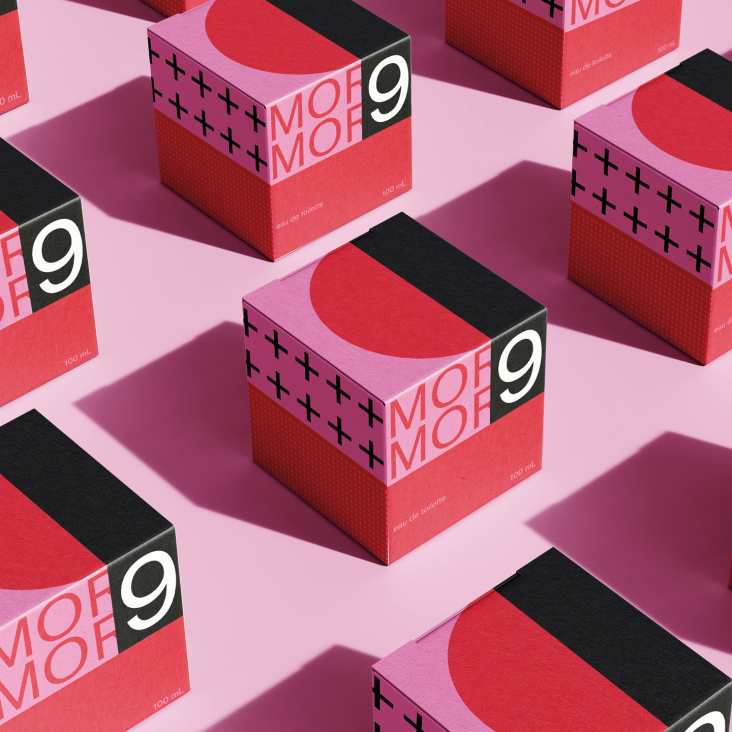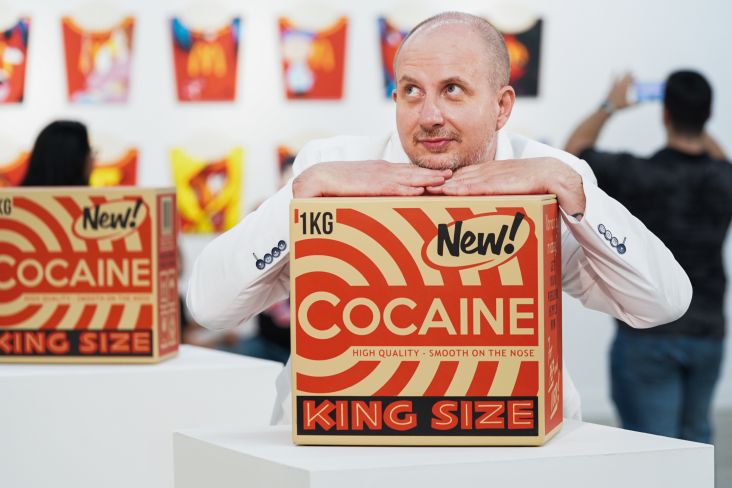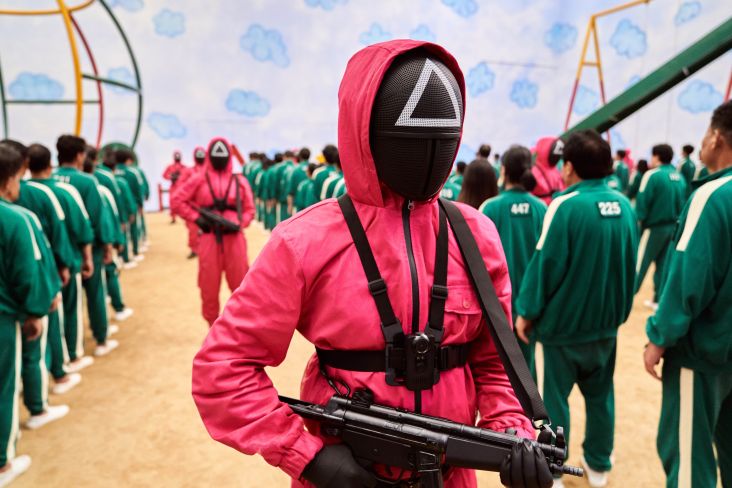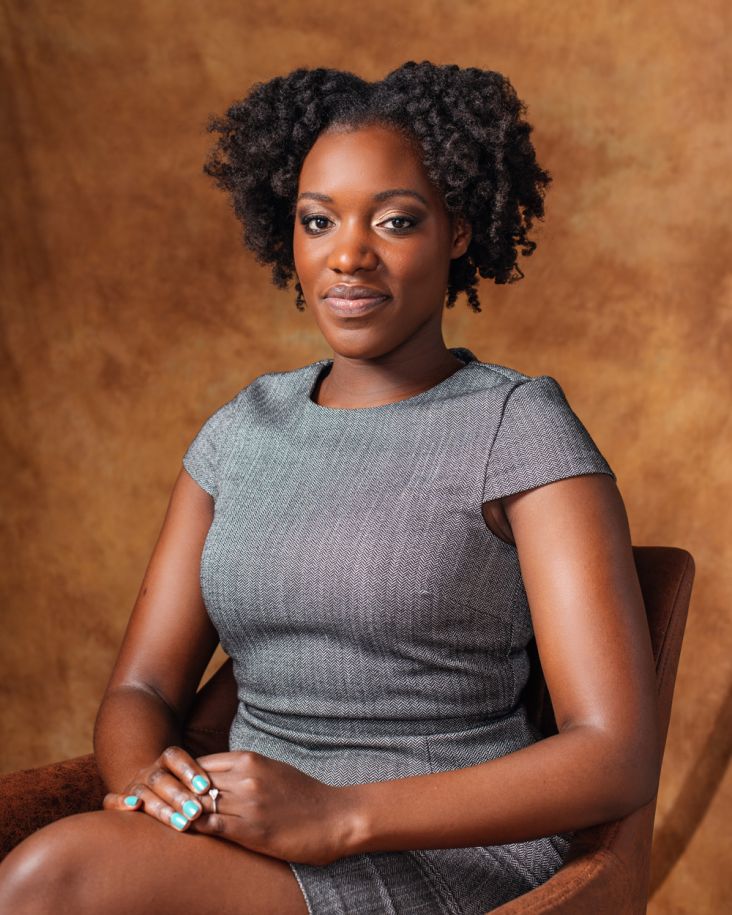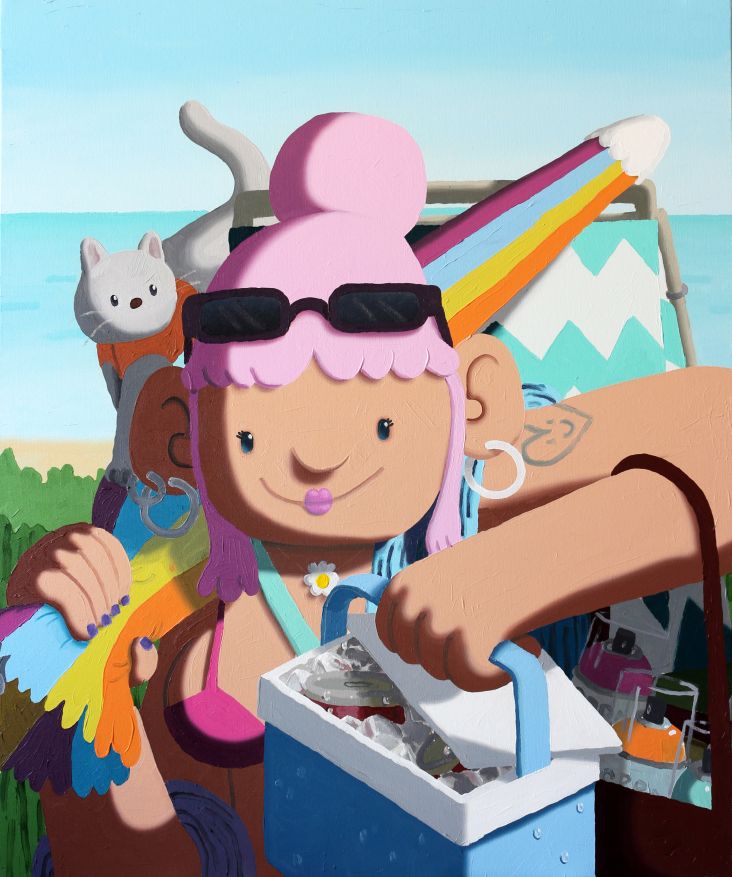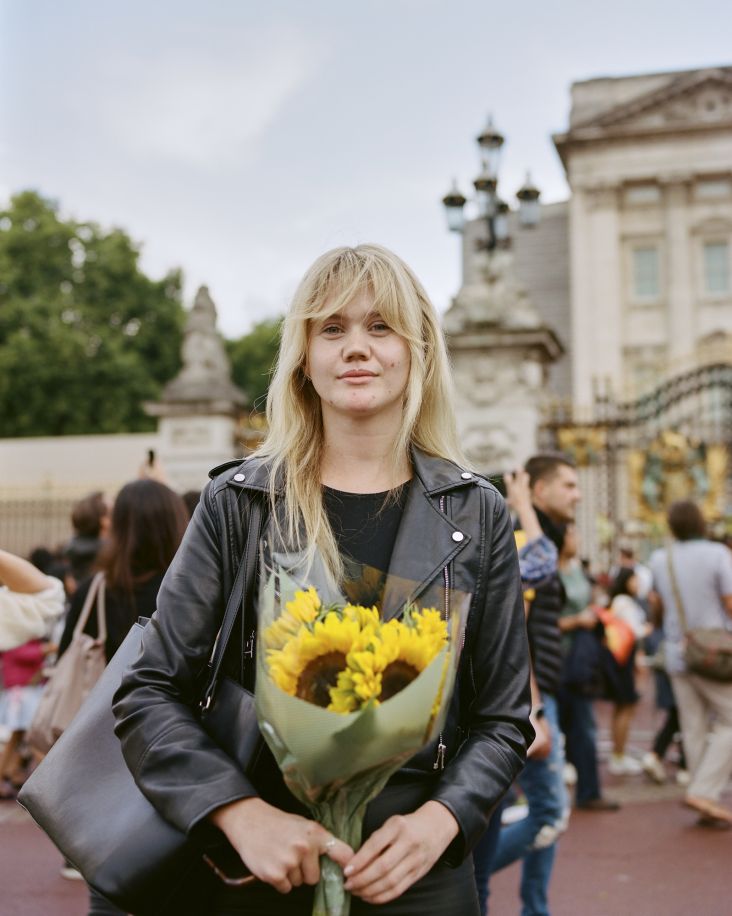Pentagram crafts unique tile and object designs in a collaboration with Spanish legends Huguet
Design agency Pentagram and Mallorcan tile manufacturer Huguet have joined forces to craft a unique collection of tile designs and products. Read on to check them out and learn about the creative process behind them.

Totem by Yuri Suzuki
Yes, we live in a digital world. But sometimes, it can feel like everything you work on these days is made of pixels, and that can start to get tiring. Then a project comes along that reminds you of the power of physical design work, and here's a great example.
Seven partners from Pentagram's London and New York Studios – Jody Hudson-Powell, Sascha Lobe, Giorgia Lupi, Jon Marshall, Luke Powell, Yuri Suzuki and Matt Wiley – have teamed up with Italian graphic designer Astrid Stavro and Spanish company Huguet to create a unique collection of tiles and objects.
Ranging from tiles that gently shimmer in the dark to a coffee table with millions of different combinations, all these pieces will be on show as part of this year's London Design Festival.
Open brief
"I've longed to do a bespoke project with Huguet for a long time," says Astrid. "Joining Pentagram proved to be the perfect moment, with Jon Marshall, Sascha Lobe, Yuri Suzuki and myself all joining as new partners the same year. That planted the seed of a collaborative project that took three years to develop due to the pandemic. In the meantime, Matt Willey and Giorgia Lupi joined as partners in New York, expanding the roster of contributors across the Atlantic.
"The idea was simple," she continues. "Each one of us would create our own project, working closely with Huguet. They were enthusiastic from the start and generously embraced the challenge. It was an open brief: there was no limitation or restriction as long as Huguet was capable of manufacturing and developing each concept."
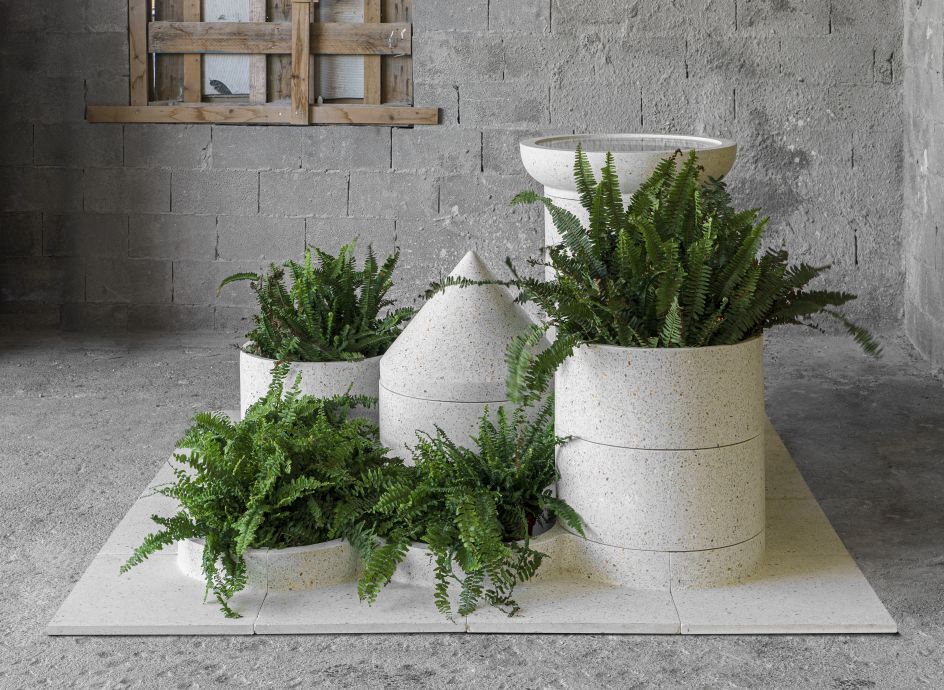
Tilescape by Jon Marshall
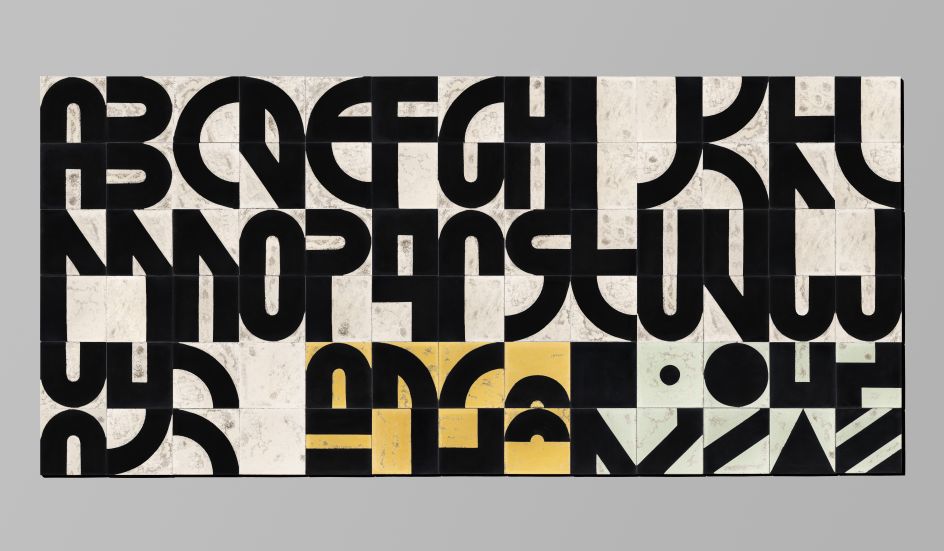
Universally Le Corbusier by Sascha Lobe
The underlying concept was to bridge Mediterranean tradition with international contemporary design, blending different cultures and practices with unique points of view.
"During this time, we held regular meetings to share our ideas, process and challenges," adds Astrid. "As curator and participant, my role was to work closely with Huguet and each participant on the logistics and challenges of each project at every stage."
Handmade and sustainable
Established in 1933, Huguet has its roots firmly in Mediterranean culture, taking inspiration from its architecture, materials and light. Its hand-crafted pieces represent a new, more sustainable take on luxury, with each tile slightly different to the next.
At its workshop in Campos in the south of Mallorca, terrazzo and cement tiles are created in small batches using handmade production methods. Huguet is keeping these skills alive by matching these traditional production methods with the best contemporary design.
Specialising in graphic, information, industrial and sound design, the designers involved all work in the digital realm. That meant the project allowed for a focus on materiality and craft and a new methodology for approaching the process of design.
The results of the collaboration are playful and surprising, with an intriguing collection of pieces that blend thoughtful, modern design with traditional craftsmanship and local, sustainable materials.
Joy and magic
"The first time I visited Huguet's HQ was a moment of joy, magic and inspiration," recalls Astrid. "Biel Huguet's understanding of design and his commitment to emphasising tradition with innovation – through collaborations with designers and architects such as Herzog and de Meuron, David Chipperfield and Alfredo Haberli – has made him a household name in Mallorca and around the world.
"By incorporating technical and aesthetic improvements over the years, Huguet's work has achieved the perfect balance of craftsmanship, sustainability, quality and innovation, managing to shift and grow with the times."
The results of the collaboration go on show for the first time at Cromwell Place from Monday 19- Sunday 25 September, as part of the London Design Festival's Brompton Design District. Below, we share details of some of the exhibits.
Universally Le Corbusier by Sascha Lobe
Inspired by Le Corbusier's study of modules and his use of colour and material, Sascha Lobe developed a flexible 18-unit tile system. The concept is based on typographic elements that can be arranged into a myriad of mosaics or written words. Countless patterns and designs can be created by arrangement, providing complete decorative and creative liberty.
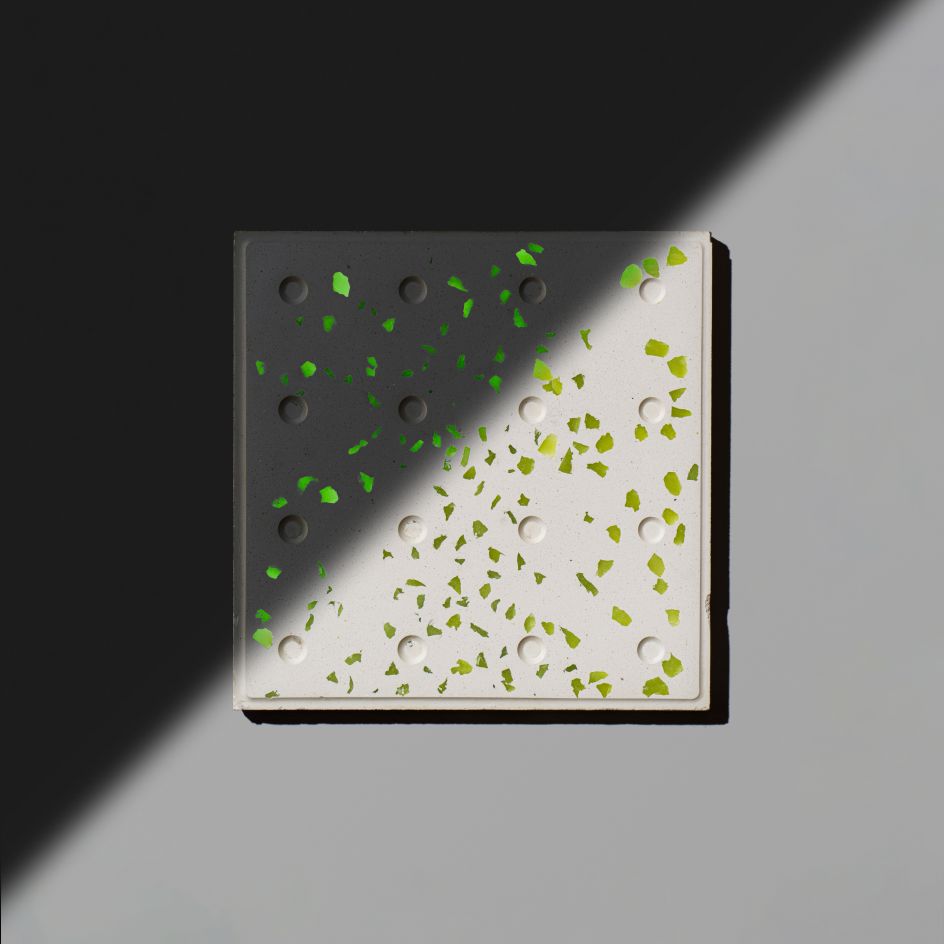
Tile design by Jody Hudson-Powell
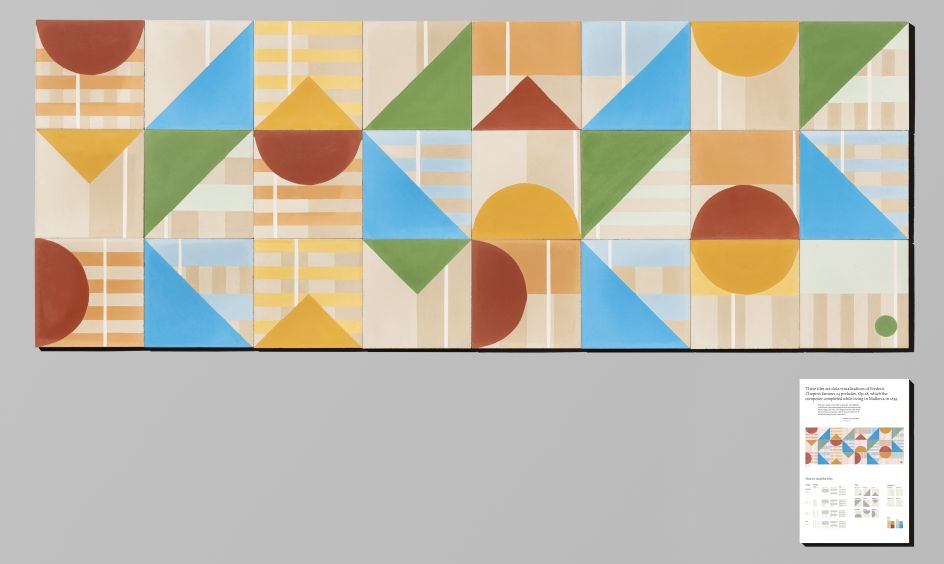
24 Preludes by Giorgia Lupi
The typographic undercurrent pushes people – whether interior designers, typophiles, architects, homemakers or decor hobbyists – to see tiles from both an ornamental and systematic perspective.
The patterns, letterforms and phrases from the modular tile system can be fully bespoke to the homemaker's needs. This system can also be easily utilised for signage on buildings both internally and externally.
The modular font 'Le Corbusier' was first introduced as a motion projection on the Corbusier building in Stuttgart, which is part of the UNESCO World Heritage Weissenhof Estate from 1927.
24 Preludes by Giorgia Lupi
These tiles are data visualisations of Frederic Chopin's famous 24 Preludes, which the composer wrote while living in Mallorca from 1838-1839. The 24 short pieces for the piano were written in each of the 24 keys.
Each tile visualises one of the 24 compositions, with different shapes and colours representing musical characteristics such as major or minor key, tempo, and length. The design fuses the maths-based nature of musical notation with the lyrical experience of listening to each piece.
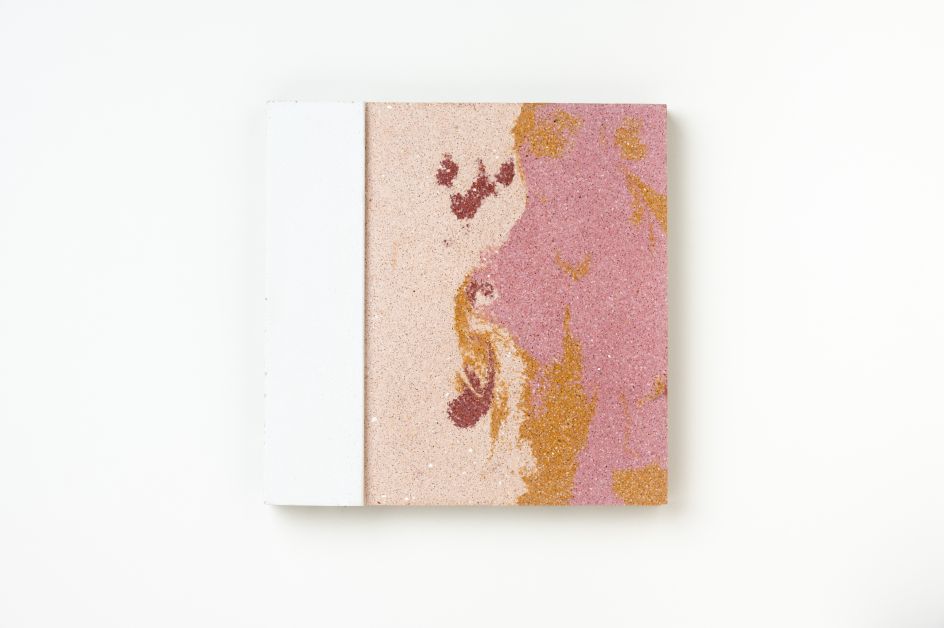
Steno by Luke Powell
Steno by Luke Powell
Inspired by the geological process of stratification, Huguet and Luke experimented with building up coloured layers of the normally unseen tile base substrate and then grinding back parts of the surface to reveal the layers underneath.
Five variations of the tiered tiles have been created with either a raised layer (traditional white tile surface) or/and a recessed layer (revealed substrate), each revealing varying amounts of the material beneath. Based on Unicode block elements, the graduating tiles form a simple modular system that can be reconfigured in any number of ways.
RE Tiles by Astrid Stavro
Huguet's work is a reflection of Mediterranean culture, tradition and values. The RE Tiles celebrate the beauty and heritage of the Mediterranean as well as Huguet's relentless commitment to innovation and sustainability.
Focusing on creating awareness of sustainability and climate change, the tiles are an ongoing series of experimental tiles based on recyclable materials commonly found in the Mediterranean.
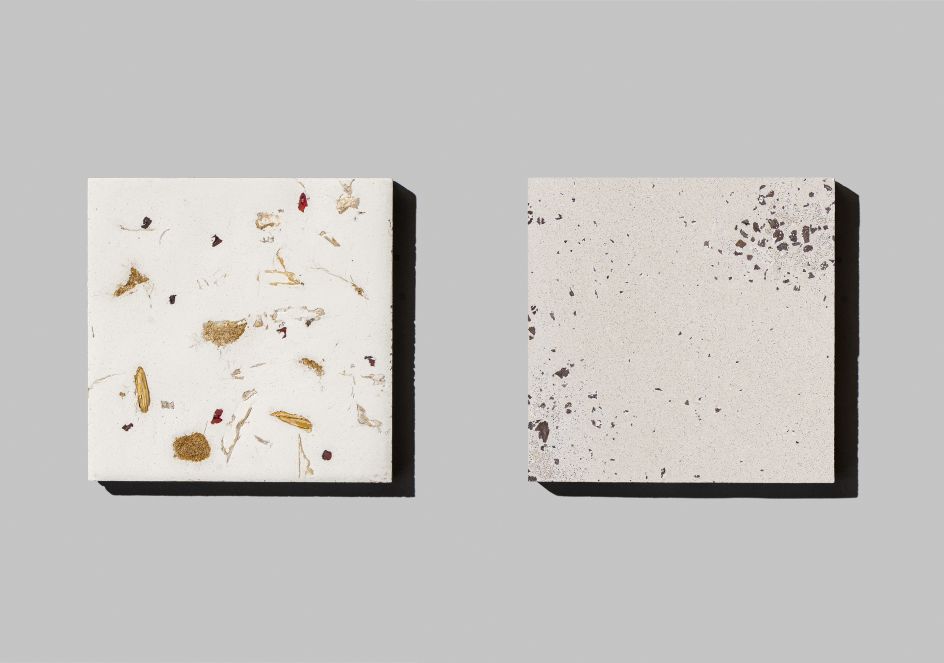
RE Tiles by Astrid Stavro
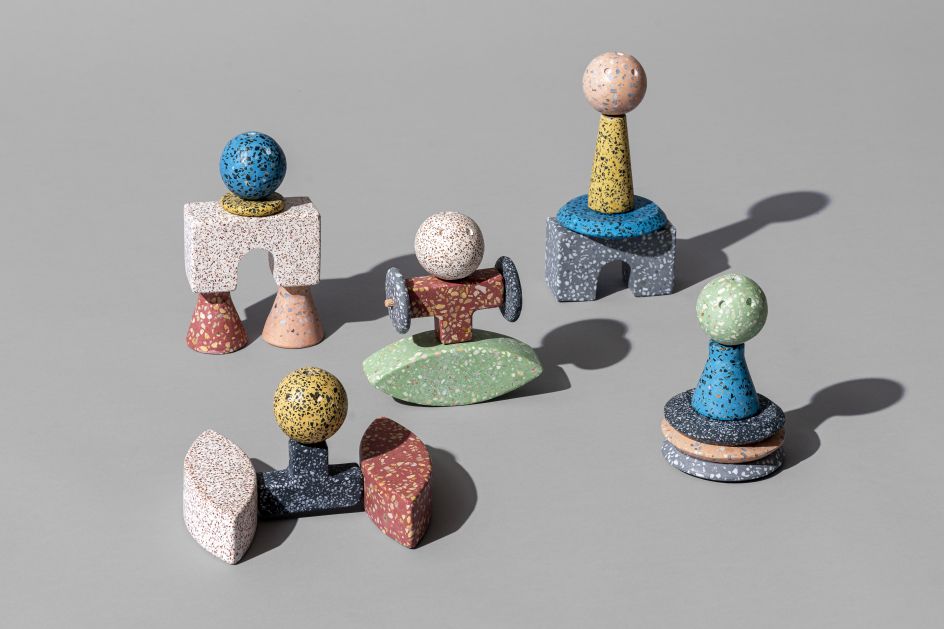
Totem by Yuri Suzuki
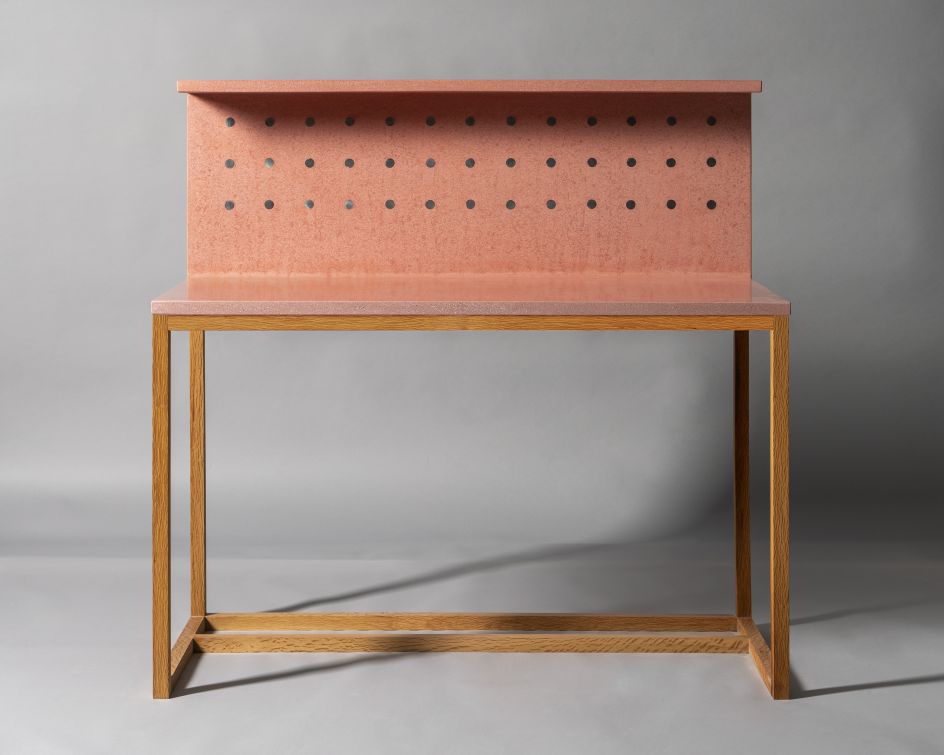
Writing Desk by Matt Willey
Totem by Yuri Suzuki
Totem is a playful exploration of the 3D aspect of Huguet's tile material and its colour, texture and pattern.
An interrogation of Huguet's material led to the creation of a series of tactile pieces which can be assembled in many different ways to create cute, doll-like figures. It's fun to build them and take them apart. And the tactile nature of the parts gives us a better understanding of the material and how it might be used.
This project was a big challenge for Huguet but has resulted in a series of objects that demand to be picked up and played with.
Writing desk by Matt Willey
A cement desk with a wooden base creates a pinboard area and a shelf within its bracketed form. The vertical face of the desk has a grid of 39 iron circles, allowing the user to 'pin' items (postcards, notes, etc.) using magnets. The iron circles will oxidise and change colour over time.
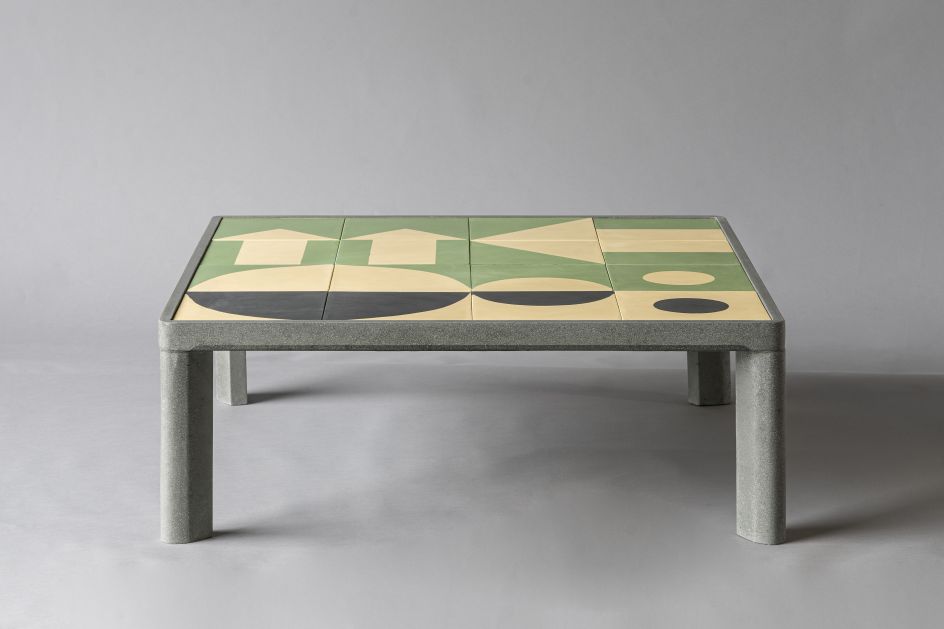
Coffee Table by Matt Willey
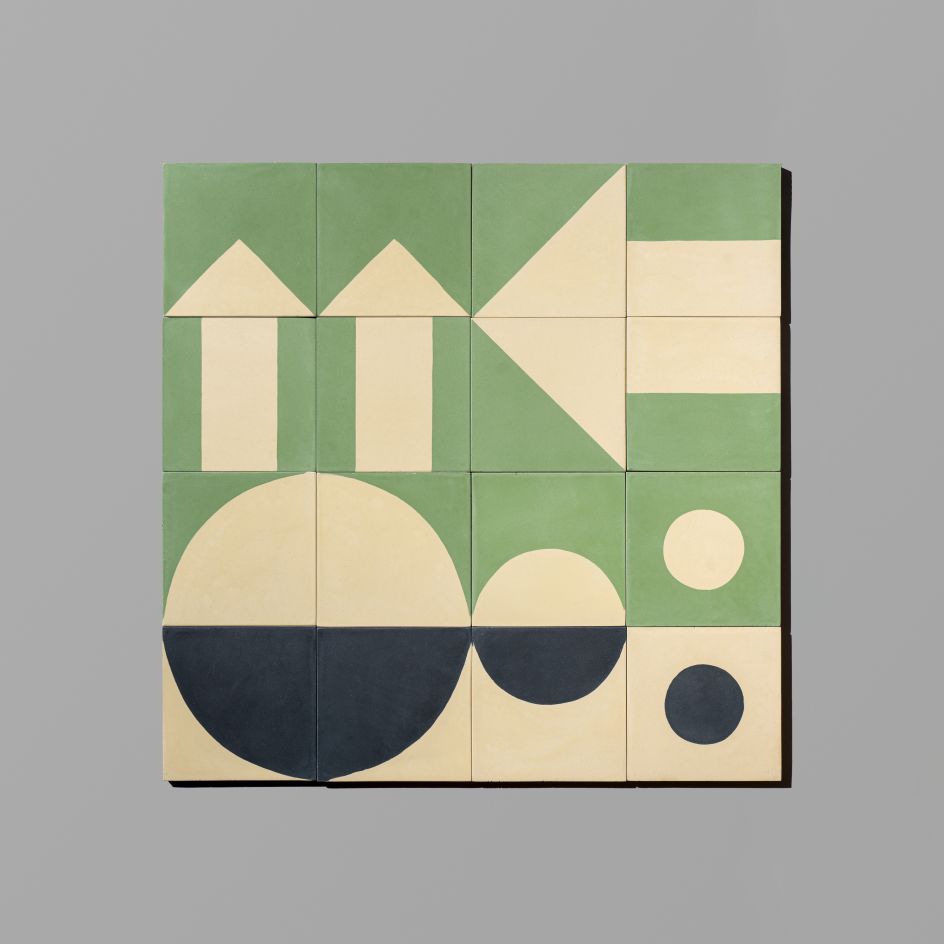
Coffee Table by Matt Willey
Coffee table by Matt Willey
A cast cement coffee table with a top composed of handmade Huguet tiles. Each of the 16 tiles can be rotated, removed and swapped out to create a nearly infinite number of compositions, making the table an ever-changing installation.
The ability to remove the tiles encourages the owner to collect different sets of tiles created by artists in ongoing collaborations with Huguet. This is something that could last a lifetime, stand up to the wear and tear of growing families and multiple moves, and is not stagnant but rather dynamic by its very nature.

















